Ever thought about turning a simple jar into a tiny green world? You can create stunning terrariums on a budget with everyday items. Start with a basic mason jar—about 1-quart size—adding a 2-inch layer of pebbles for drainage, followed by 1 inch of activated charcoal to filter odors. Curious about more clever ideas? Stick around to explore nine other practical designs for your home decor.
Contents
Mason Jar Mini Gardens
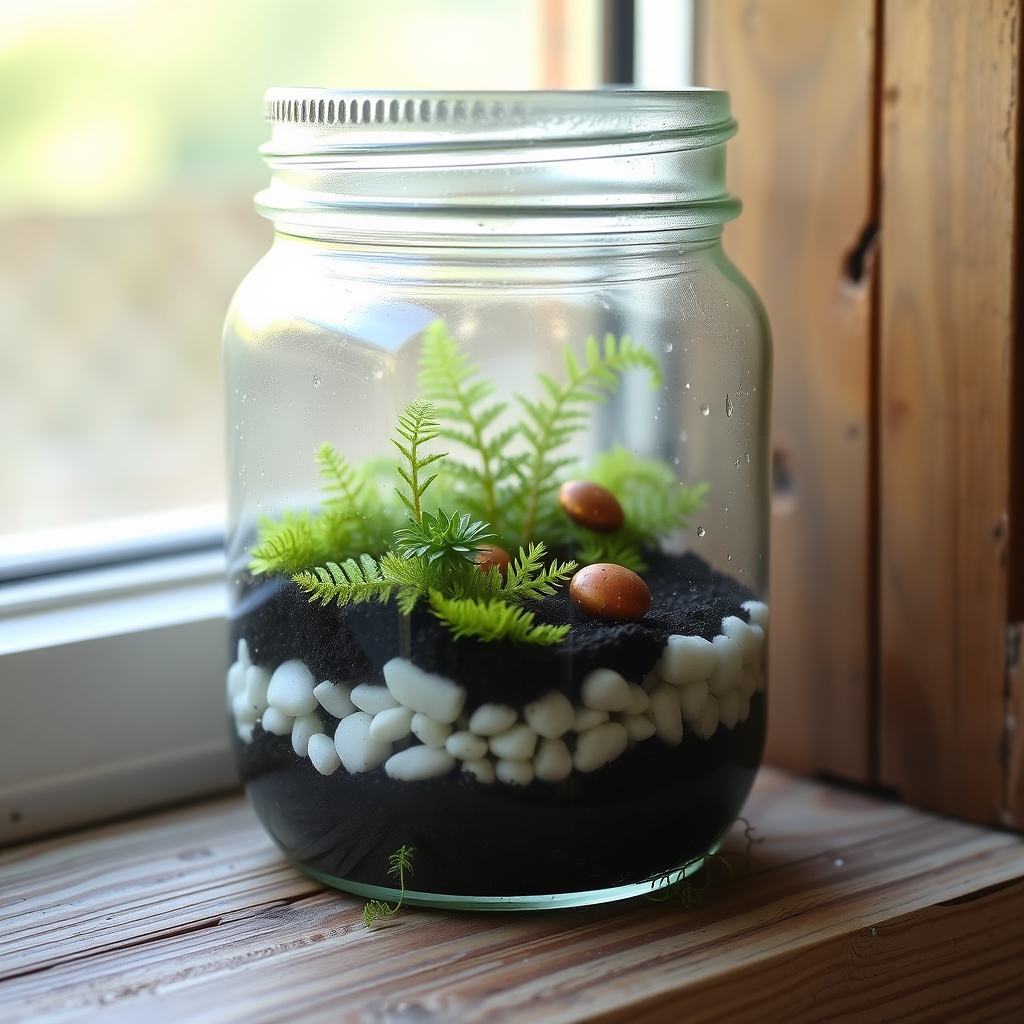
Mason jar mini gardens are a charming and accessible way to bring a touch of nature indoors, especially for those with limited space. These small-scale terrariums utilize glass mason jars, which are widely available and affordable, to create self-contained ecosystems. Their compact size makes them perfect for decorating desks, windowsills, or kitchen counters, adding a bit of greenery to any corner of your home.
To create a mason jar mini garden, start with a layer of pebbles or small rocks at the bottom for drainage, followed by a thin layer of activated charcoal to keep the environment fresh. Add a layer of potting soil, then carefully plant small, low-maintenance plants like moss, air plants, or tiny ferns that thrive in humid conditions. Seal the jar with its lid to maintain moisture, or leave it open for plants that prefer drier air, and place it in indirect sunlight to avoid overheating.
These mini gardens are not only easy to assemble but also highly customizable, allowing you to experiment with different plant combinations, decorative elements like figurines or colored stones, and jar sizes. They require minimal care, making them ideal for beginners or busy individuals who want a low-effort way to enjoy indoor gardening.
Thrifted Glassware Displays

Thrifted glassware displays offer a unique and budget-friendly way to create stunning terrariums. By scouring thrift stores, garage sales, or even your own kitchen cabinets, you can find an array of glass containers like old vases, jars, candle holders, or even fishbowls that can be repurposed into charming mini ecosystems. These items often come with character and quirks, adding a vintage or eclectic touch to your terrarium design while keeping costs low.
The beauty of using thrifted glassware lies in the variety of shapes and sizes available, allowing for endless creativity. A tall, narrow vase might house a vertical arrangement of air plants and moss, while a wide, shallow bowl could become a desert landscape with succulents and sand. Simply clean the glassware thoroughly, layer in your substrate, and arrange your plants and decorative elements to suit the container’s unique form. This approach not only recycles forgotten items but also transforms them into personalized pieces of living art.
For an added touch of charm, consider incorporating small trinkets or figurines found at thrift stores to enhance the theme of your terrarium. These displays can fit into any space, from a windowsill to a bookshelf, bringing a bit of nature indoors with a story behind each piece. Thrifted glassware terrariums are a perfect blend of sustainability and style, showcasing your creativity and resourcefulness.
Plastic Container Creations

Plastic Container Creations offer an accessible and budget-friendly way to craft stunning terrariums using everyday items like plastic bottles, jars, or storage containers. These materials are often readily available at home or can be purchased inexpensively, making them ideal for beginners or those looking to experiment with terrarium design without a significant investment. The transparency of plastic also mimics the look of glass, providing a clear view of the miniature ecosystem inside while being lightweight and durable.
To create a terrarium in a plastic container, start by selecting a container with a lid or one that can be sealed to maintain humidity, which is essential for tropical plants like ferns or mosses. Layer the bottom with small pebbles or gravel for drainage, followed by a thin layer of activated charcoal to prevent mold and odors. Add a substrate suitable for your chosen plants, and then arrange small, humidity-loving plants or even air plants for a low-maintenance option. Decorative elements like figurines, rocks, or driftwood can enhance the aesthetic appeal.
Plastic containers are also highly versatile, allowing for creative shapes and sizes that can fit into various spaces, from desktops to shelves. They can be easily cut or modified for custom designs, such as creating a hanging terrarium from a plastic bottle. With proper care, these creations can thrive as charming, self-contained gardens, bringing a touch of nature indoors with minimal cost and effort.
Repurposed Light Bulb Terrariums
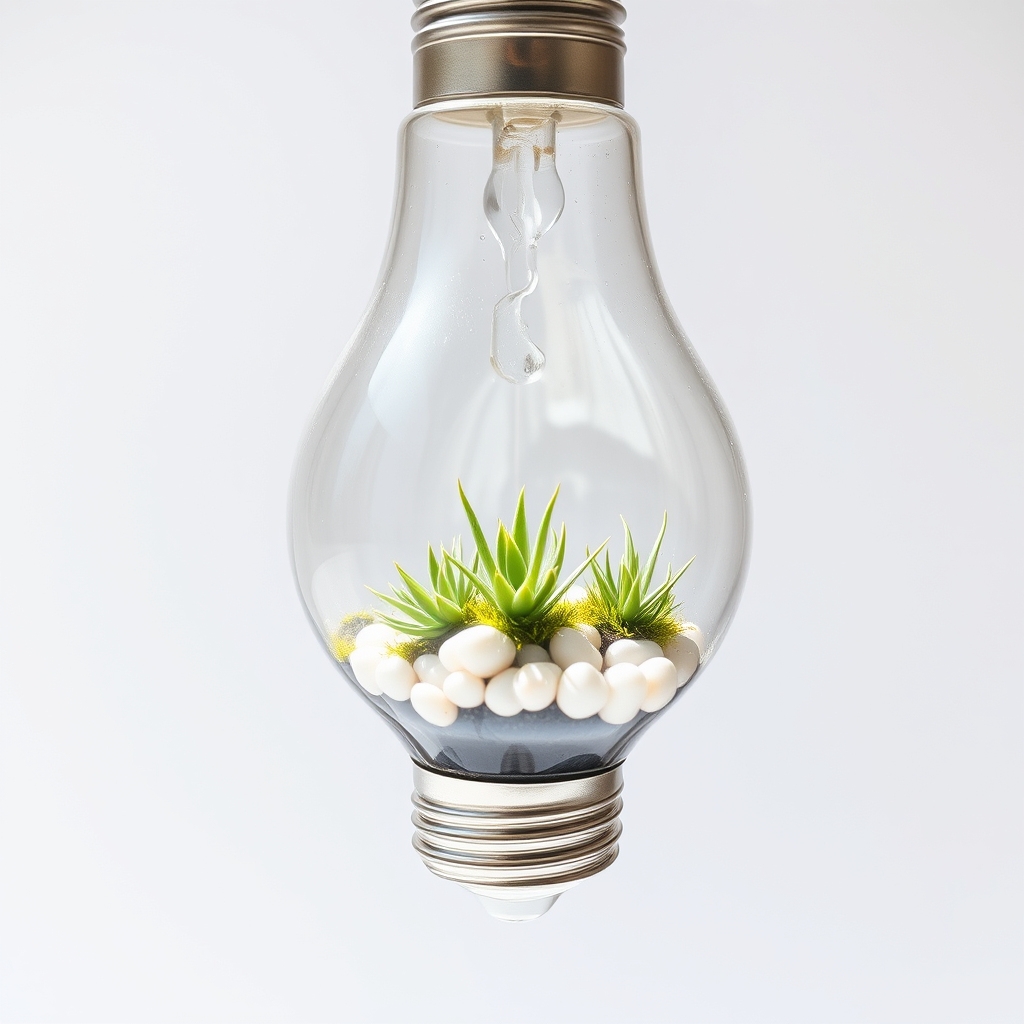
Repurposed light bulb terrariums are a creative and eco-friendly way to bring a touch of greenery into small spaces. By transforming old, burnt-out light bulbs into miniature ecosystems, you can craft unique decor pieces that are both sustainable and visually striking. This DIY project involves carefully hollowing out the bulb, removing its internal components, and filling it with tiny plants, moss, pebbles, or even figurines to create a whimsical micro-world.
To make a light bulb terrarium, start by safely disassembling the bulb with proper tools and protective gear to avoid injury from broken glass. Once the bulb is prepared, add a base layer of small rocks or sand for drainage, followed by a layer of moss or soil to support plant life. Choose small, low-maintenance plants like air plants or succulents that thrive in confined spaces with minimal watering. Hang the finished terrarium with string or wire for a floating effect, or place it on a stand to showcase your miniature garden.
These tiny terrariums are perfect for adding charm to desks, shelves, or windowsills, and they make thoughtful, handmade gifts. Their compact size and customizable designs allow for endless creativity, whether you opt for a natural, earthy look or a more fantastical scene with tiny decorations. Repurposed light bulb terrariums are a delightful way to upcycle everyday items into something beautiful and functional.
Dollar Store Vase Designs
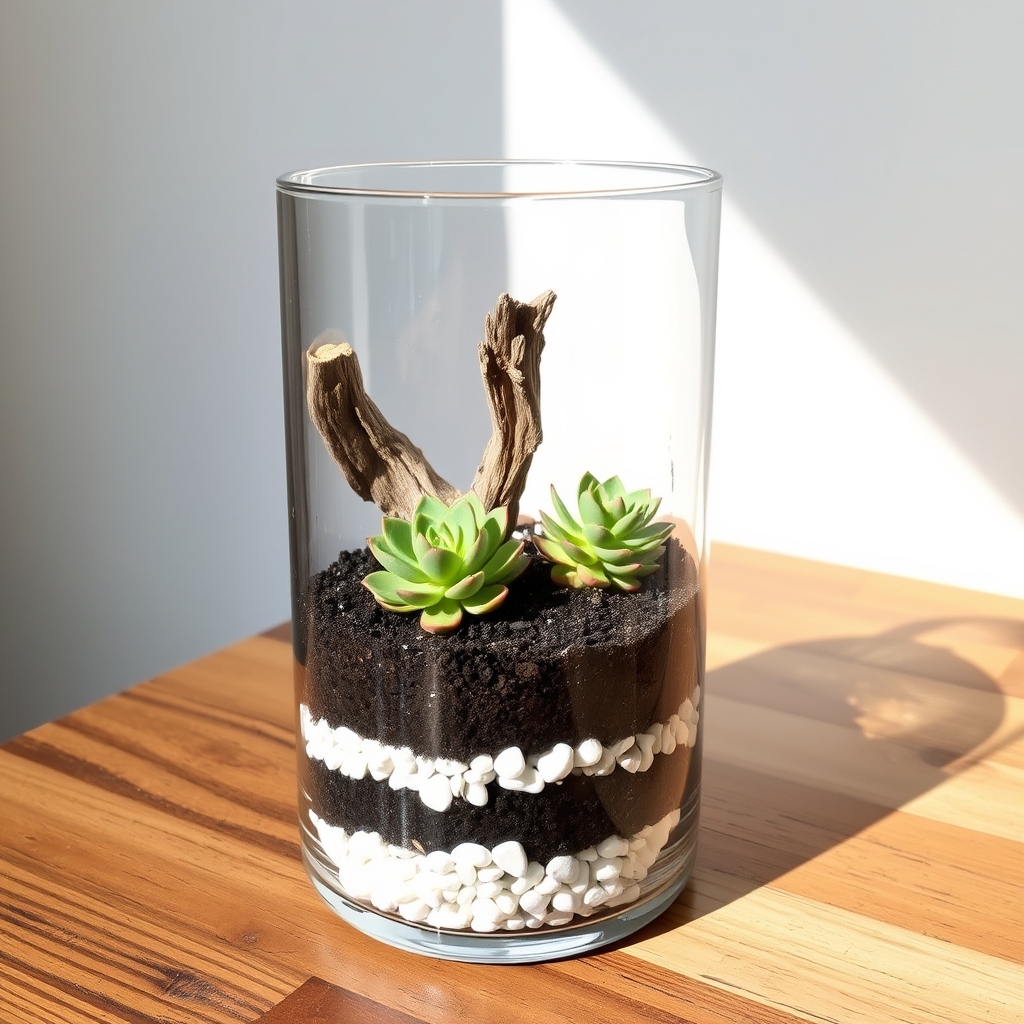
Dollar store vases offer an affordable and versatile option for creating stunning terrarium designs. These vases come in a variety of shapes and sizes, from classic cylindrical forms to unique geometric or bulbous styles, making them perfect for crafting personalized mini ecosystems. With just a few dollars, you can transform these budget-friendly containers into beautiful displays for succulents, air plants, or moss, adding a touch of greenery to any space without breaking the bank.
To create a dollar store vase terrarium, start by selecting a vase with a wide enough opening to layer materials like pebbles, activated charcoal, and potting soil. Add your chosen plants, ensuring they are suitable for the enclosed environment, and decorate with small figurines, rocks, or driftwood for a whimsical touch. Since many dollar store vases are made of glass, they provide excellent visibility, allowing you to showcase the intricate layers and textures of your terrarium design.
These vases are also ideal for experimenting with different themes, such as desert landscapes or lush forest scenes, depending on the plants and decor you choose. Their low cost means you can create multiple terrariums for various rooms or as thoughtful, handmade gifts. With a little creativity, dollar store vases can become the foundation for eye-catching terrarium designs that rival more expensive alternatives.
Tin Can Plant Homes
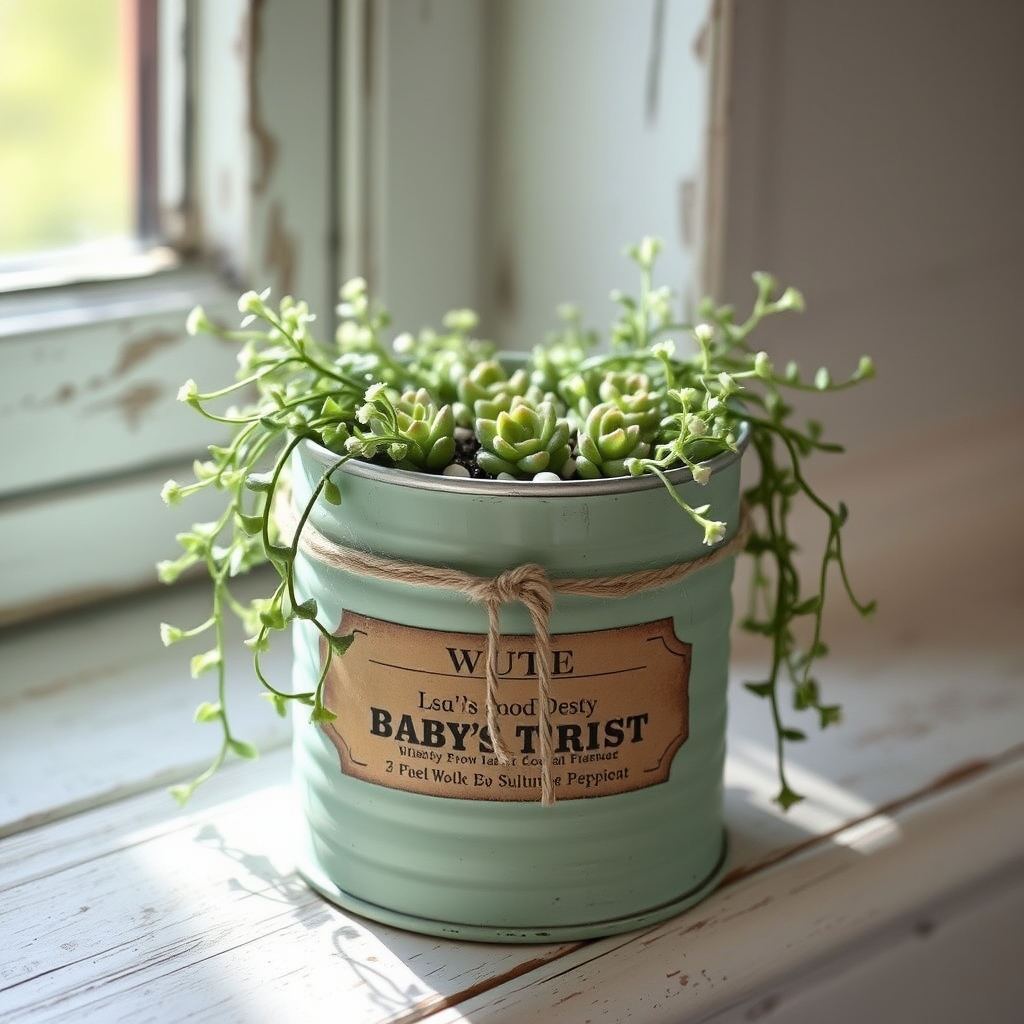
Tin Can Plant Homes offer a creative and eco-friendly way to repurpose everyday items into charming terrarium containers. By using empty tin cans, you can craft small, rustic homes for your plants, adding a unique touch to your indoor or outdoor space. This idea is perfect for those who love upcycling and want to incorporate sustainable practices into their gardening projects.
To create a tin can plant home, start by thoroughly cleaning and removing any sharp edges from the can to guarantee safety. You can paint or decorate the exterior with patterns, colors, or even wrap it with twine for a more natural look. Add a layer of pebbles or small rocks at the bottom for drainage, followed by soil, and then plant small succulents, herbs, or moss that thrive in confined spaces.
These tin can terrariums are not only budget-friendly but also highly customizable, allowing you to experiment with different sizes and designs. Place them on windowsills, shelves, or hang them with string for a whimsical display. This simple project brings a touch of greenery into your home while giving new life to items that might otherwise be discarded.
Old Fish Bowl Ecosystems

Old fish bowls can be repurposed into charming miniature ecosystems, offering a unique and creative way to design a terrarium. These glass containers, often sitting unused after their original purpose, provide a perfect enclosed environment for small plants, moss, and even tiny figurines or decorative elements. Their rounded shape adds a whimsical touch, making them an eye-catching centerpiece for any room.
To create an old fish bowl ecosystem, start by layering the bottom with small pebbles or gravel for drainage, followed by a thin layer of activated charcoal to keep the environment fresh. Add a substrate suitable for your chosen plants, such as potting soil mixed with sand for succulents or a richer mix for ferns and moss. Select low-maintenance plants that thrive in humid, enclosed spaces, and consider adding natural elements like driftwood or small rocks to enhance the aesthetic.
These mini ecosystems are not only easy to maintain but also serve as a delightful way to bring a piece of nature indoors. With minimal watering and occasional pruning, an old fish bowl terrarium can flourish, providing a serene and green focal point in your home.
DIY Wooden Box Enclosures
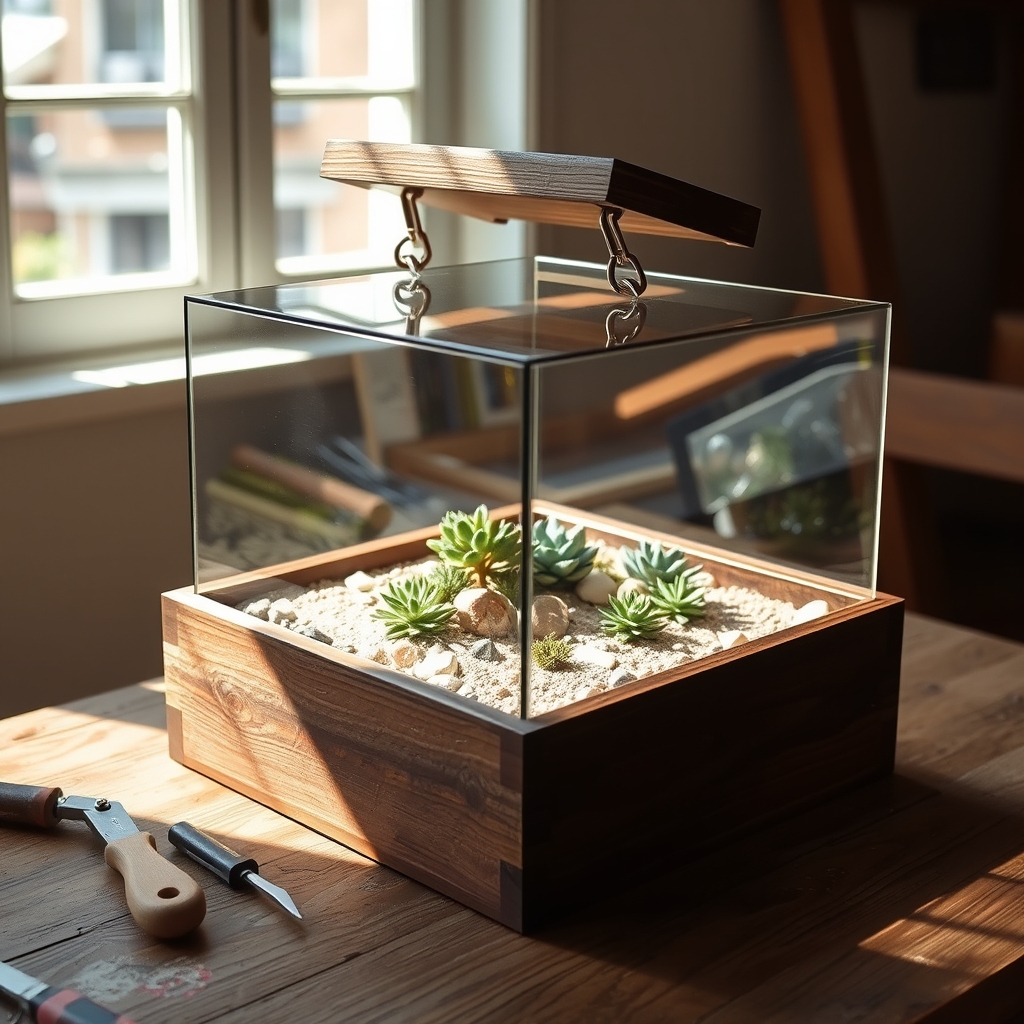
DIY wooden box enclosures are a fantastic way to create a custom terrarium that blends seamlessly with your home decor. These enclosures are typically made from wood frames with glass or acrylic panels, offering a rustic yet modern aesthetic. Building your own wooden box terrarium allows you to tailor the size, shape, and style to fit your space and the specific needs of your plants or small animals.
To start, gather materials such as plywood or reclaimed wood, glass or acrylic sheets, hinges, and a latch for the lid or door. Cut the wood to your desired dimensions, sand it for a smooth finish, and assemble the frame using wood glue or screws. Attach the glass or acrylic panels to the sides, ensuring they are secure and sealed to maintain humidity if needed. You can stain or paint the wood to match your decor, and add ventilation holes or mesh if the enclosure is for reptiles or amphibians.
These DIY enclosures are not only cost-effective but also provide a personal touch to your terrarium setup. They can be designed as tabletop displays or larger floor-standing units, depending on your vision. With a little creativity, you can incorporate features like built-in lighting or drainage systems to enhance functionality while maintaining an attractive, natural look.
Recycled Bottle Landscapes
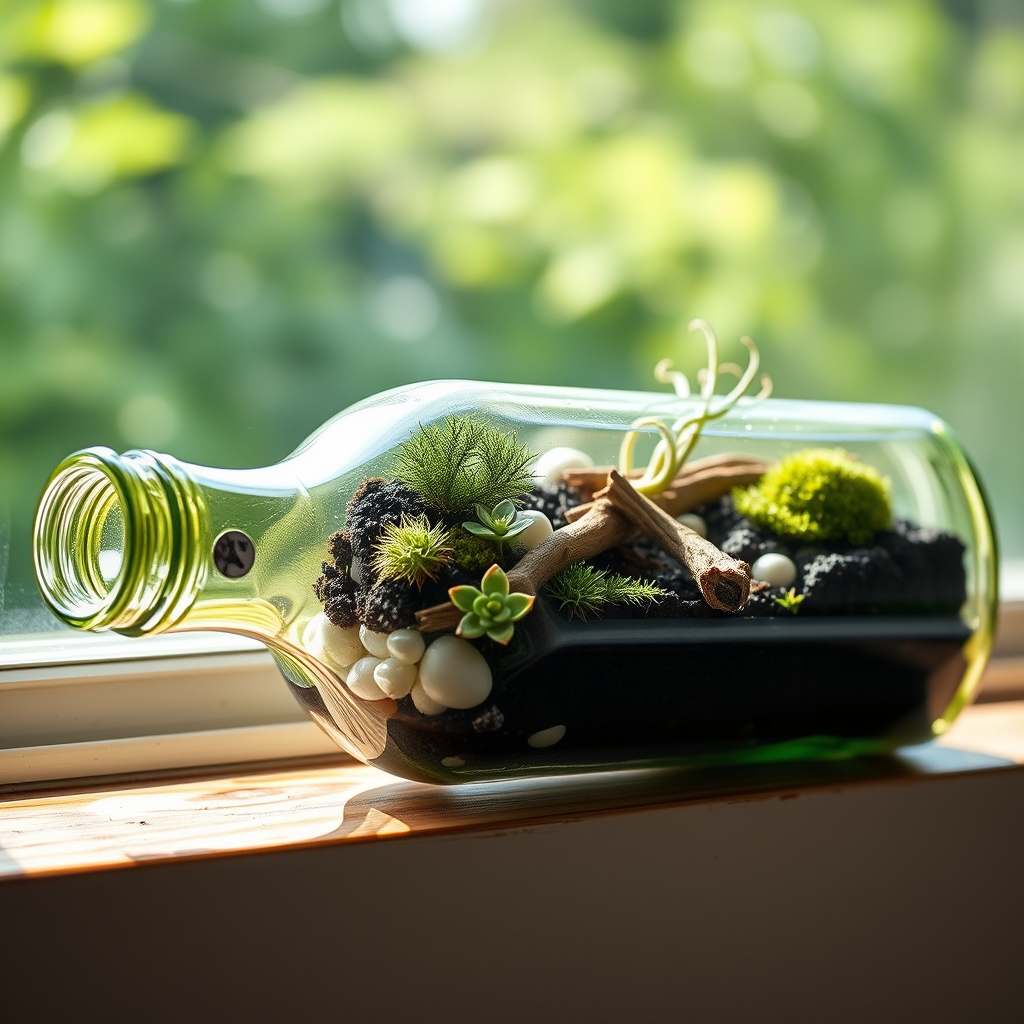
Recycled bottle landscapes offer a creative and eco-friendly way to design miniature terrariums using discarded plastic or glass bottles. By repurposing items that would otherwise end up in landfills, you can craft unique, self-contained ecosystems that bring a touch of greenery into small spaces. This approach not only promotes sustainability but also allows for endless customization, as bottles of various shapes and sizes can be transformed into stunning displays.
To create a recycled bottle landscape, start by thoroughly cleaning and drying the bottle to guarantee a healthy environment for your plants. Cut the bottle if necessary to create an opening for planting, or use the neck of the bottle as an access point for smaller designs. Layer the bottom with pebbles for drainage, add a thin layer of activated charcoal to prevent mold, and top with potting soil suitable for your chosen plants, such as succulents, moss, or small ferns. Seal the bottle if you’re creating a closed terrarium, or leave it open for plants that require more air circulation.
These miniature landscapes are perfect for decorating desks, windowsills, or shelves, and they require minimal maintenance once established. You can further personalize your terrarium by adding tiny figurines, decorative stones, or driftwood to create a whimsical scene. Recycled bottle landscapes are an excellent way to experiment with terrarium design while contributing to a more sustainable lifestyle.
Budget-Friendly Layered Pebble Styles
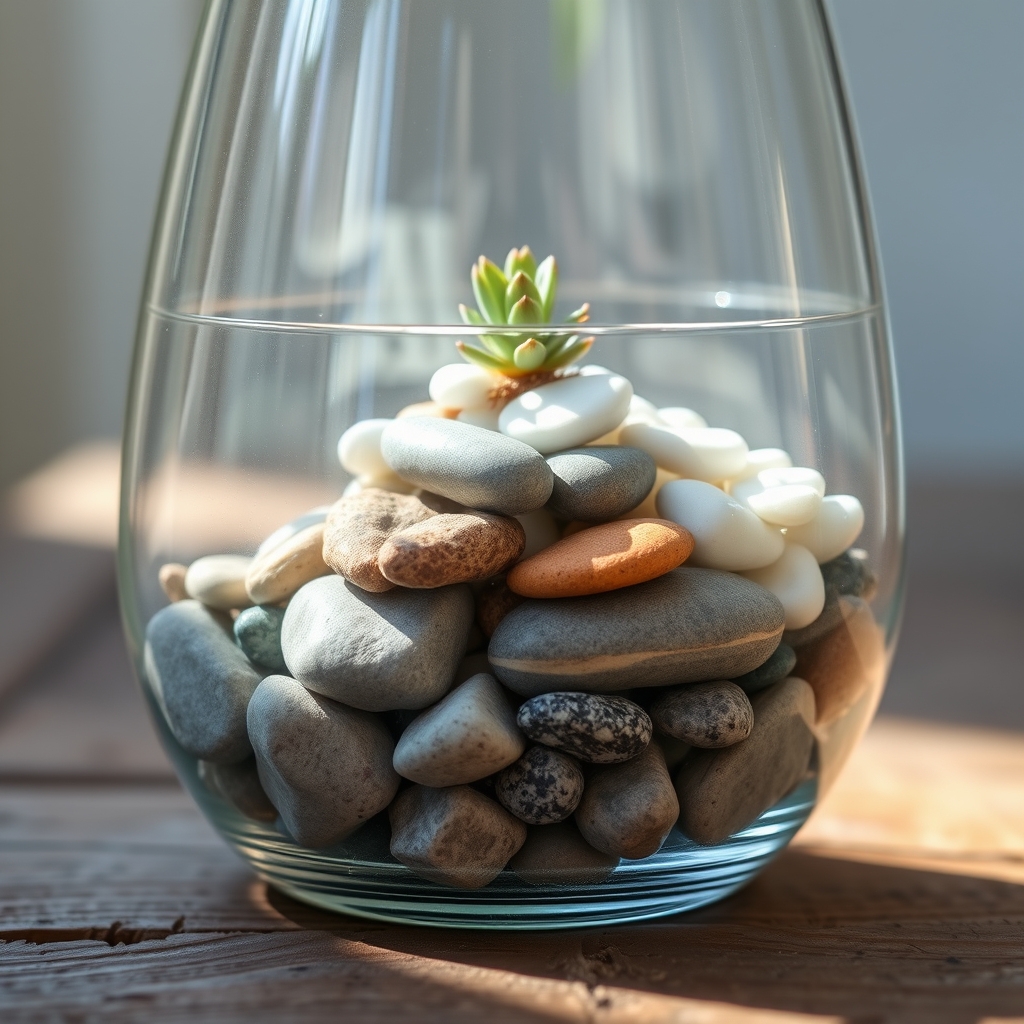
Creating a budget-friendly layered pebble style for your terrarium is an excellent way to achieve a polished, natural look without breaking the bank. Pebbles are widely available, inexpensive, and come in various sizes, colors, and textures, making them a versatile base for terrarium designs. By layering different types of pebbles, you can mimic natural landscapes like riverbeds or rocky terrains, adding depth and visual interest to your miniature ecosystem.
Start with a base layer of larger, more affordable pebbles or gravel, which can often be sourced from local hardware stores or even collected from nature (ensure they are cleaned and safe for your terrarium). Then, add a middle layer of medium-sized pebbles in a contrasting color or texture to create a gradient effect. Top it off with a thin layer of smaller, decorative pebbles or polished stones for a refined finish. This layering technique not only enhances the aesthetic appeal but also helps with drainage, preventing root rot in your plants.
For an even more cost-effective approach, consider mixing in other natural elements like sand or small rocks between the pebble layers to add variety. You can also repurpose items from around your home, such as glass beads or broken pottery, to create unique accents within the layers. With a little creativity, this budget-friendly method allows you to craft a stunning terrarium that looks professionally designed while keeping costs low.
